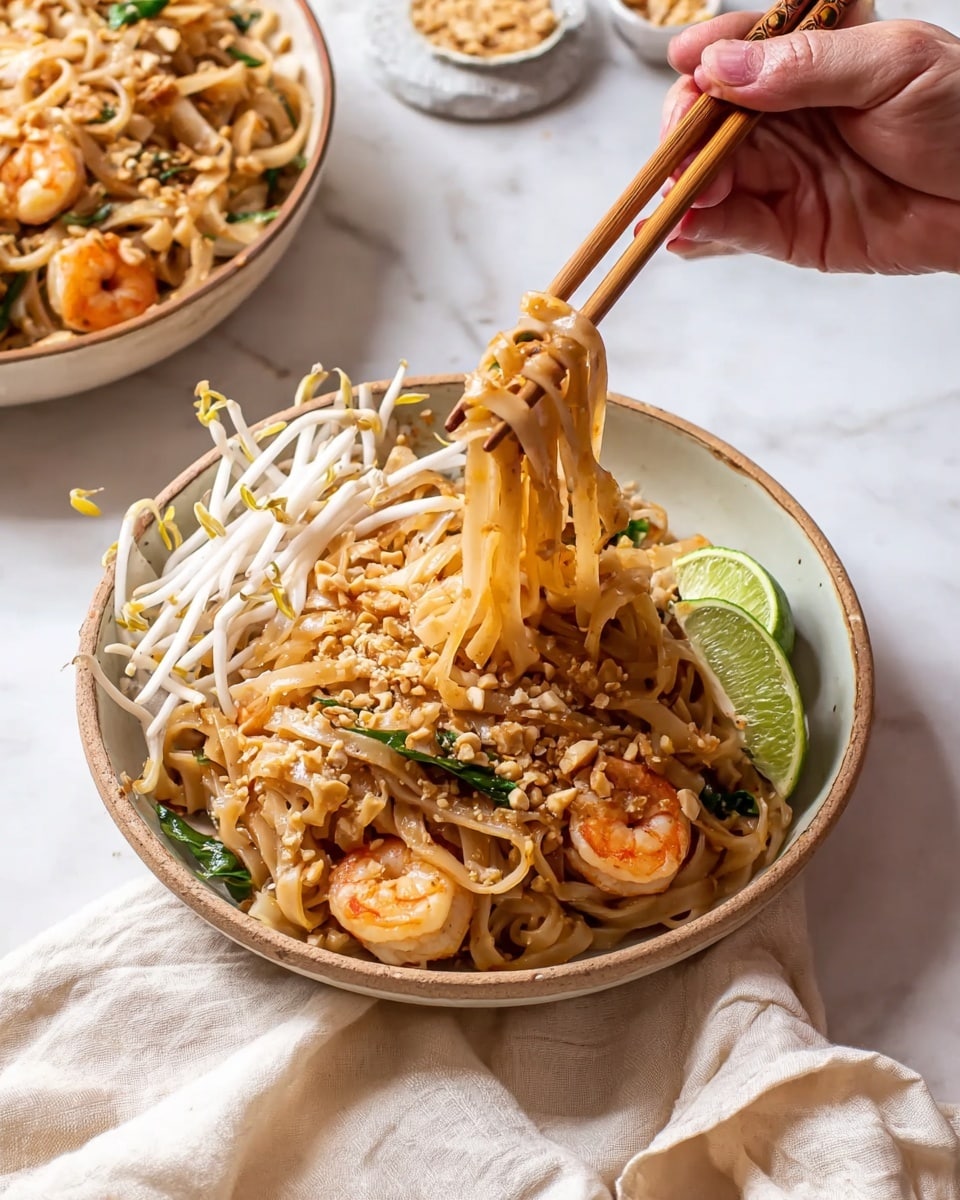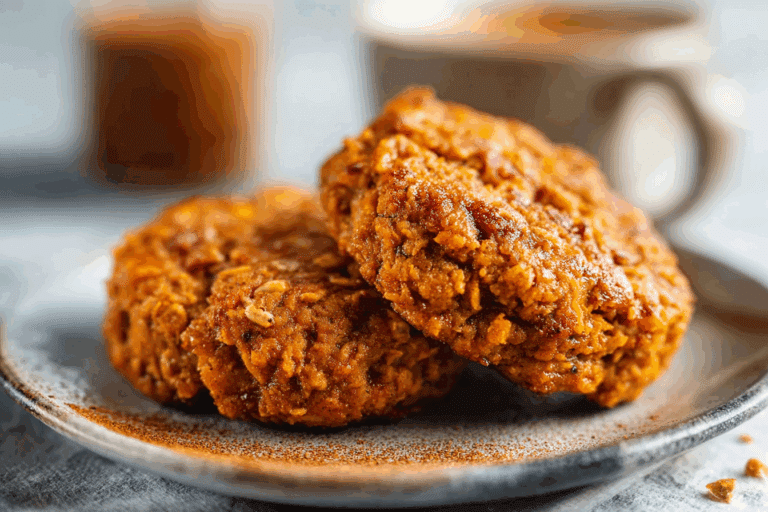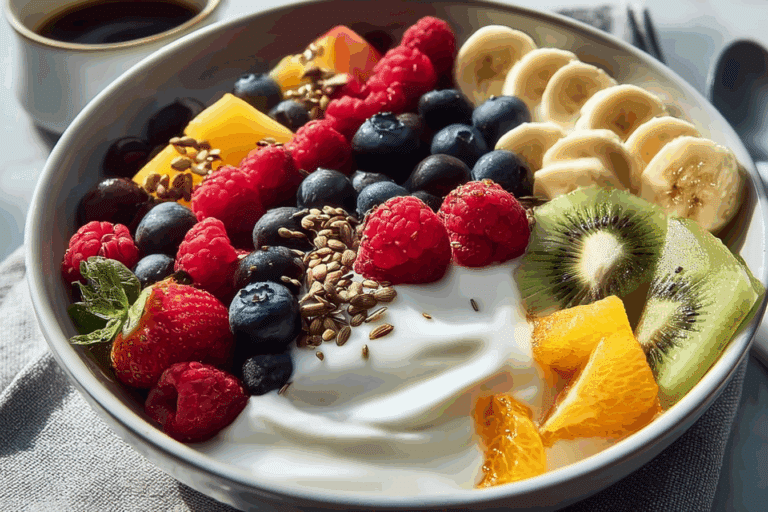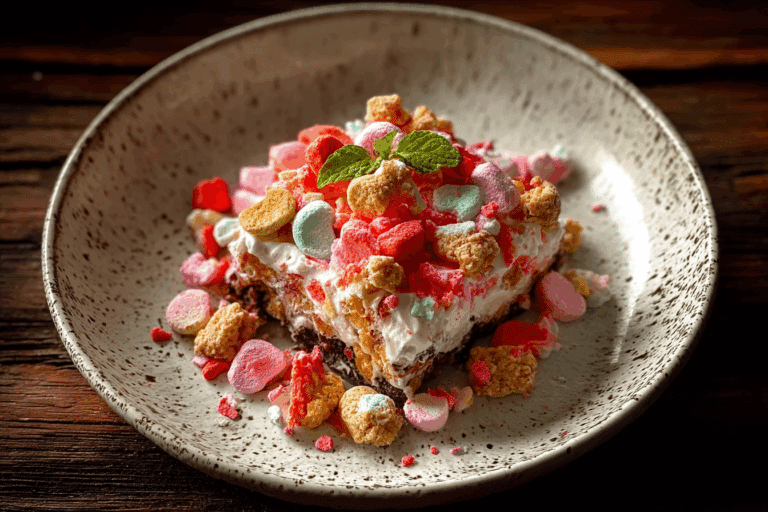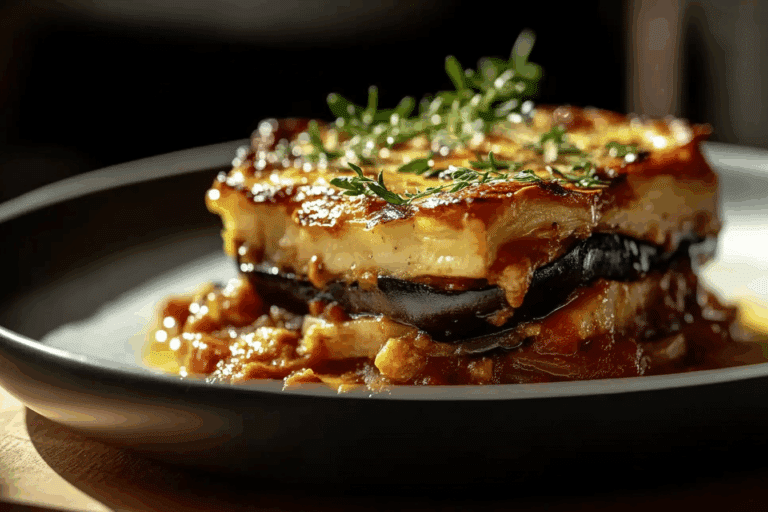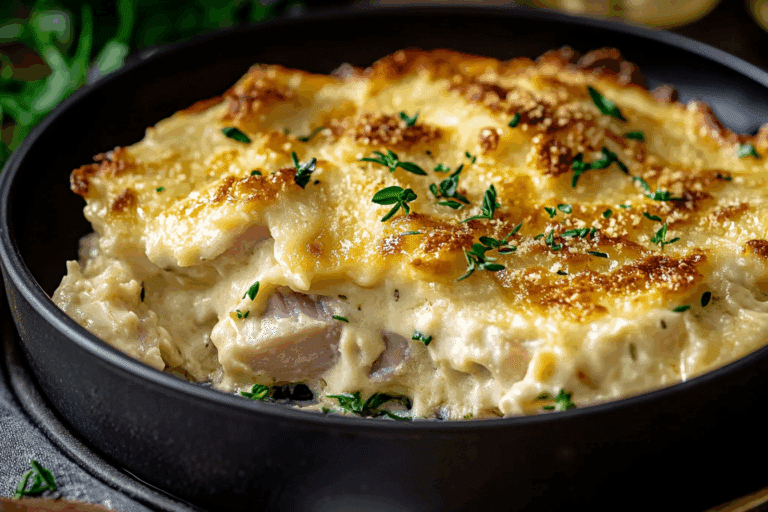Authentic Pad Thai with Shrimp and Tofu Recipe
If you’ve ever wanted to capture the vibrant, tangy, and savory magic of street food at home, this Authentic Pad Thai with Shrimp and Tofu Recipe is just what you need. I remember the first time I made it—it immediately whisked me back to bustling Bangkok streets, with every bite bursting with that perfect balance of sweet, sour, and umami. What I love about this recipe is how accessible it is; it uses simple ingredients but combines them in such a way that you get an authentic experience without any complicated tricks.
This dish works perfectly for a weeknight dinner when you want something quick yet impressive, or for a weekend when you’re feeling a bit more adventurous in the kitchen. Plus, the combination of shrimp and tofu offers a lovely mix of textures and flavors, making it satisfying whether you’re cooking for yourself, family, or friends. Trust me, once you master this Authentic Pad Thai with Shrimp and Tofu Recipe, it’s going to become a regular in your rotation!
Ingredients You’ll Need
Each ingredient here plays an important role in capturing the authentic Pad Thai flavor, from the tamarind’s tanginess to the crunchy peanuts on top. Don’t worry if you can’t find everything perfectly—there are always good substitutes, and I’ll share some tips to help along the way.
- Tamarind pulp: The heart of your Pad Thai sauce, providing that iconic tartness. Look for it in Asian markets or in the international aisle of your supermarket.
- Boiling water: To soften the tamarind pulp for mixing.
- Brown sugar or palm sugar: Adds a deep, mellow sweetness that balances the tamarind’s sourness.
- Fish sauce: Gives the sauce a savory depth—authentic Pad Thai isn’t complete without it.
- Oyster sauce: Adds a sweet and slightly briny richness to round out flavors.
- Shrimp (peeled and deveined): Fresh or thawed works best; you want them tender and flavorful.
- Thai soy sauce: This adds saltiness and color; if you don’t have Thai soy sauce, a light soy sauce works.
- Pad Thai noodles: These flat rice noodles are essential—don’t substitute with spaghetti!
- Garlic (minced): For that aromatic punch I always crave.
- Shallots (minced): Adds sweetness and texture; easily found fresh or pre-chopped.
- Firm tofu: Pressed and sliced thin to soak up the sauce without falling apart.
- Dried shrimp: These tiny gems are packed with umami; if you’re not a fan, you can omit or reduce.
- Eggs (whisked): To add a silky richness.
- Bean sprouts: Freshness and crunch that brighten each bite.
- Garlic chives: Adds an herby note; find them at Asian grocery stores or substitute with green onions in a pinch.
- Roasted peanuts (crushed): The signature crunchy topping that you have to have.
- Lime wedges: For squeezing on top and balancing all the flavors.
- Dried chili flakes: Adjust these to your heat preference; I love a little kick!
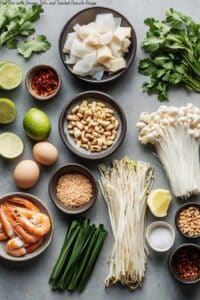
Variations
One of the best things about this Authentic Pad Thai with Shrimp and Tofu Recipe is how easy it is to tailor to your taste or dietary needs. I often switch things up depending on what I have on hand or how much time I want to spend.
- Vegetarian Version: I swap out shrimp and dried shrimp for more tofu and add extra crushed peanuts and lime. It’s just as satisfying without any seafood.
- Extra Protein: Sometimes I throw in sliced chicken or even pork instead of shrimp when I’m feeling like switching things up.
- Spice Level: Depending on your heat tolerance, add more or less dried chili flakes—or even fresh bird’s eye chilies for that authentic kick.
- Noodle Alternatives: If you can’t find traditional rice noodles, try wide rice vermicelli as a substitute, although it slightly changes the texture.
- Gluten-Free Version: Use tamari instead of soy sauce and double-check oyster sauce for gluten content to keep it safe and still tasty.
How to Make Authentic Pad Thai with Shrimp and Tofu Recipe
Step 1: Prepare the Tangy Pad Thai Sauce
Start by softening the tamarind pulp in boiling water—this unlocks its rich sour flavor. Stir in the brown sugar, fish sauce, and oyster sauce until everything melts together into a smooth, flavorful blend. This sauce is your flavor powerhouse, so taste it and adjust—more sugar if you want sweeter, more tamarind if you want tangier. I like to keep it balanced, but you can make it your own.
Step 2: Marinate the Shrimp
Toss the peeled and deveined shrimp with a teaspoon each of Thai soy sauce and fish sauce. Let them sit for about 10 minutes while you prep everything else. This step isn’t complicated but really amps up the shrimp’s flavor—don’t skip it!
Step 3: Soften and Cook the Rice Noodles
Follow the package instructions carefully because Pad Thai noodles can get mushy fast. Usually, a quick soak in warm water until they’re soft but still firm is perfect. Drain them well and set aside—you don’t want any excess water diluting your sauce later.
Step 4: Sauté aromatics, tofu, and dried shrimp
In a hot wok or large skillet, heat some oil and toss in minced garlic and shallots. Sauté for about a minute until fragrant, then add the thinly sliced tofu and dried shrimp. Cooking the tofu with the aromatics helps it soak up all those beautiful flavors. Keep the heat high but be careful not to burn the garlic.
Step 5: Cook the shrimp and eggs
Add the marinated shrimp next, stirring quickly as they turn pink—this takes just a couple of minutes. Push everything to one side and pour in the whisked eggs on the other, scrambling them gently until just set. Combining the eggs into the mix adds a silky texture that pairs perfectly with the noodles.
Step 6: Combine noodles and sauce
Add the drained noodles right into the pan and pour over the prepared Pad Thai sauce. Toss everything together carefully but thoroughly, making sure every noodle gets coated. This is where your kitchen starts smelling like a Thai street market—such a satisfying moment!
Step 7: Finish with fresh veggies and herbs
Just before serving, stir in bean sprouts and garlic chives — these fresh ingredients bring a brightness and crunch that balance the noodles’ richness. Sprinkle the crushed roasted peanuts on top for a final nutty texture. Now it’s ready to plate!
How to Serve Authentic Pad Thai with Shrimp and Tofu Recipe
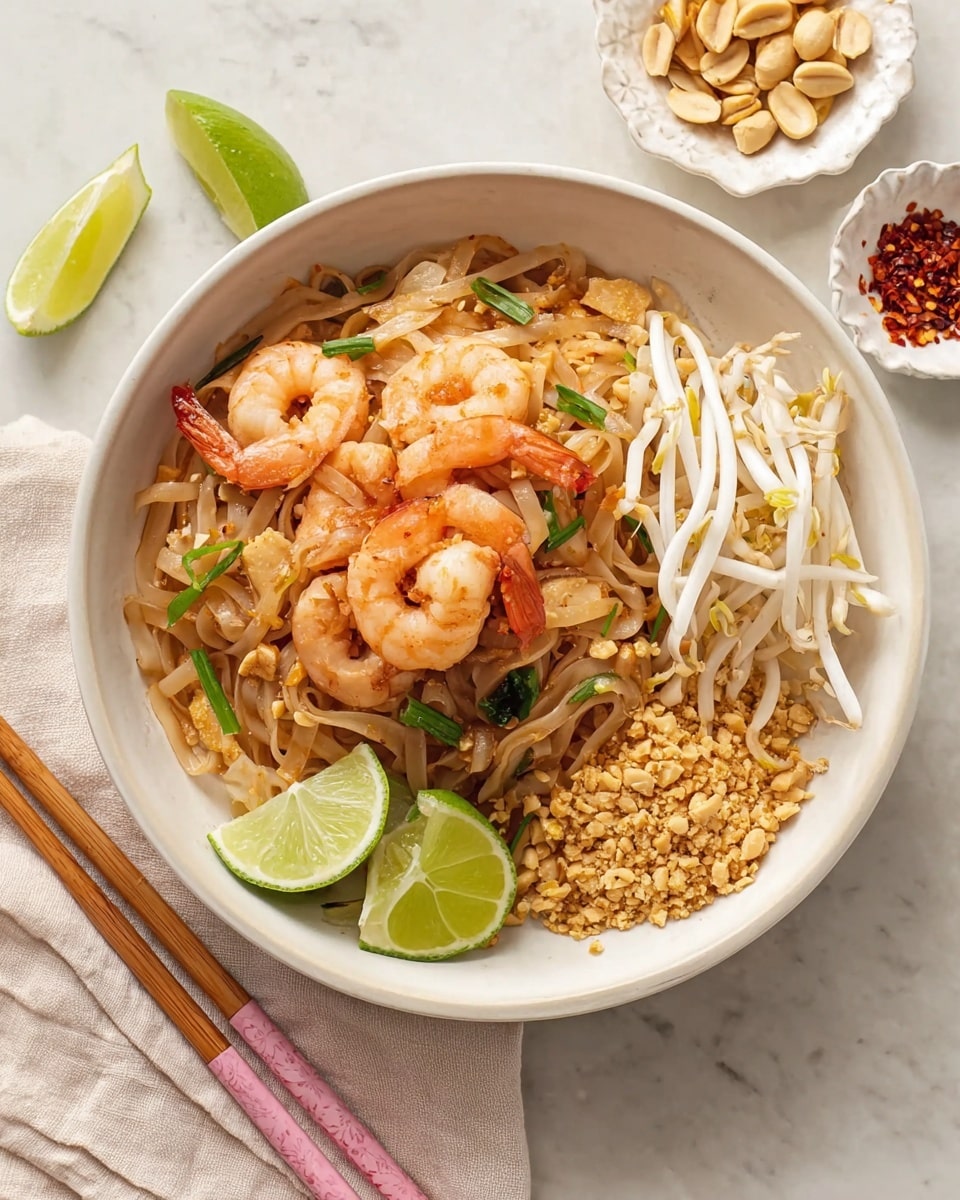
Garnishes
I never serve Pad Thai without extra crushed roasted peanuts and lime wedges on the side. Squeezing fresh lime juice right before eating brightens all the flavors perfectly, and the peanuts add that addictive crunch. If you like heat, sprinkle some dried chili flakes—you can control the spice level this way, which I appreciate!
Side Dishes
I love pairing this dish with simple sides like a crisp cucumber salad dressed in rice vinegar or even some steamed jasmine rice if you want a more casual meal. A light soup like Tom Yum or a fresh papaya salad can make your dinner feel extra special and balanced. For me, it’s all about complementing the flavors without overpowering that authentic Pad Thai taste.
Creative Ways to Present
Hosting friends? Try serving your Pad Thai in individual banana leaf bowls or create edible lettuce cups to scoop it up—everyone loves a fun way to eat. Alternatively, you can place it over a bed of crisp greens for a fresh twist. These little presentation ideas make your dinner look impressive and show you put some love into the details.
Make Ahead and Storage
Storing Leftovers
After your feast, pack any leftovers into airtight containers and store them in the fridge. I find that the noodles do absorb sauce over time, so save some fresh bean sprouts and chopped chives to toss in when you reheat—it revives that fresh texture and flavor. Leftovers taste great for up to 2 days.
Freezing
Freezing Pad Thai isn’t my favorite because the noodles tend to get mushy once thawed. But if you need to, freeze the cooked components separately (like the sauce and shrimp) and freshen up with quick-cooked noodles or bean sprouts when you’re ready to eat. This trick helps avoid texture loss.
Reheating
I usually reheat leftover Pad Thai in a hot skillet with a splash of water to loosen the sauce. Toss in fresh bean sprouts and herbs at the end to keep that vibrant brightness. Microwave can work if you’re in a rush, but stovetop reheating keeps the best texture.
FAQs
-
What makes this recipe an authentic Pad Thai with shrimp and tofu?
This recipe stays true to traditional flavors by using key ingredients like tamarind pulp, fish sauce, dried shrimp, and roasted peanuts, which are essential for authentic Pad Thai. Combining shrimp and tofu offers a balance of textures true to many street vendor versions. Plus, the homemade sauce balances sweet, sour, and salty, which is the hallmark of real Pad Thai.
-
Can I make this Authentic Pad Thai with Shrimp and Tofu Recipe vegan?
Absolutely! Simply skip the shrimp and dried shrimp, use mushrooms or extra tofu, and replace fish sauce and oyster sauce with vegan alternatives or soy sauce. There are many great plant-based fish sauces available in specialty stores or online to keep that umami flavor.
-
How do I prevent the noodles from sticking together?
Rinse the cooked noodles under cold water immediately after soaking to stop them from cooking further, then drain very well before adding to your wok. Also, tossing them quickly in hot oil when stir-frying helps keep them separate. Be careful not to over-soak noodles as that causes clumping.
-
Is tamarind pulp hard to find?
Not really! Tamarind pulp is common in Asian grocery stores and often comes in blocks or pre-made paste forms. If you can’t find pulp, tamarind concentrate or even bottled tamarind sauce can work, but adjust the quantity to taste since concentrates are more potent.
-
Can I prepare any parts of this recipe in advance?
Definitely. You can make the Pad Thai sauce ahead of time and keep it refrigerated for a few days. Also, peel and marinate your shrimp and prep your aromatics and tofu in advance to speed up cooking when you’re ready. Just combine everything last minute for the freshest results.
Final Thoughts
This Authentic Pad Thai with Shrimp and Tofu Recipe holds a little piece of my heart—it reminds me of joyful meals with friends and the thrill of mastering new flavors at home. I’m confident you’ll enjoy the process and the delicious results as much as I do. It’s approachable enough for a regular weeknight but special enough to impress guests. So next time you’re craving something truly bold and satisfying, give this recipe a go—you won’t regret it!
Print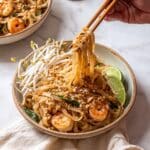
Authentic Pad Thai with Shrimp and Tofu Recipe
- Prep Time: 20 minutes
- Cook Time: 15 minutes
- Total Time: 35 minutes
- Yield: 2 servings 1x
- Category: Main Course
- Method: Stovetop
- Cuisine: Thai
Description
This authentic Pad Thai recipe offers a perfect balance of sweet, sour, and savory flavors with a tangy tamarind-based sauce, succulent shrimp, firm tofu, fresh bean sprouts, and crunchy peanuts. Quick and easy to prepare, this classic Thai street food dish is stir-fried to perfection, making it an ideal meal for any day of the week.
Ingredients
Sauce
- 3 tablespoon Tamarind pulp (about 1.5 oz)
- ¼ cup boiling water (or more if needed)
- ¼ cup brown sugar or palm sugar
- 2 tablespoon fish sauce
- 2 tablespoon oyster sauce
Shrimp
- 8 oz shrimp, peeled and deveined
- 1 teaspoon Thai soy sauce
- 1 teaspoon fish sauce
Pad Thai
- 6 oz Pad Thai noodles
- 4 cloves garlic, minced
- ⅓ cup shallots (about 3 shallots), minced
- 3 oz firm tofu, drained and cut into thin slices
- 2 tablespoon dried shrimp
- 2 eggs, whisked
- 2 cups bean sprouts, loosely packed
- 10 garlic chives, cut into 1-inch pieces
- 2 tablespoons roasted peanuts, crushed
Garnish
- Roasted peanuts, crushed
- Lime wedges
- Dried chili flakes
Instructions
- Prepare the Sauce: In a small bowl, combine tamarind pulp with boiling water and stir to dissolve. Add brown sugar, fish sauce, and oyster sauce, mixing well until the sugar is fully incorporated. Adjust the consistency by adding more water if necessary, and set aside.
- Marinate the Shrimp: Toss the peeled and deveined shrimp with Thai soy sauce and fish sauce, ensuring they are evenly coated. Let it marinate while preparing the rest of the ingredients.
- Cook the Noodles: Soak Pad Thai noodles in warm water for about 15 minutes or until they are softened but still firm to the bite. Drain and set aside.
- Prepare the Stir-fry Base: Heat a tablespoon of oil in a large skillet or wok over medium-high heat. Add minced garlic and shallots, sautéing until fragrant and golden brown.
- Add Tofu and Dried Shrimp: Add firm tofu slices and dried shrimp to the skillet, stirring gently to combine and lightly brown the tofu for about 2 minutes.
- Cook the Shrimp: Add the marinated shrimp to the pan and cook until they turn pink and are cooked through, about 2-3 minutes.
- Add the Eggs: Push the ingredients to one side of the pan, pour in the whisked eggs on the other side, and scramble until just set. Then mix everything together thoroughly.
- Combine Noodles and Sauce: Add the soaked noodles to the skillet, pour the prepared tamarind sauce over them, and toss gently to combine and heat through for 2-3 minutes. Ensure the noodles absorb the sauce evenly.
- Add Fresh Ingredients: Stir in the bean sprouts and garlic chives, cooking for an additional 1-2 minutes to retain their freshness and crunch.
- Finish with Peanuts: Remove from heat and sprinkle the crushed roasted peanuts on top.
- Serve and Garnish: Plate the Pad Thai and garnish with additional crushed peanuts, lime wedges, and dried chili flakes to taste. Serve immediately.
Notes
- Soaking noodles properly is crucial to ensure they cook evenly and have the right texture.
- Tamarind pulp can be substituted with tamarind paste diluted in water if pulp is unavailable.
- You can adjust the sweetness and saltiness of the sauce to your preference by adding more sugar or fish sauce.
- For vegetarian version, omit shrimp and fish sauce, and substitute oyster sauce with mushroom sauce.
- Use fresh garlic chives for authentic flavor; scallions can be used as a substitute.
Keywords: Pad Thai, Thai noodles, Shrimp Pad Thai, Street Food, Stir Fry, Tamarind Sauce, Easy Thai Recipe

